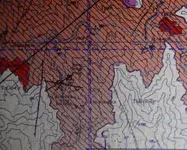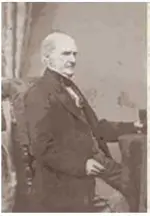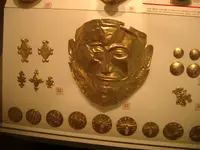lilorphanannie
Full Member
- #1
Thread Owner
The state of Durango is one of the most mineralized areas in the country of Mexico. It is also one of the most difficult to reach many of the earliest mines as access to those worked prior to the 1900’s was by mule trail and the ore was packed out by mule train. Infrastructure is still undeveloped in many places and never will be as there doesn’t exist any logical reason to build roads through this mountainous /canyon country, so many of these mines are lost due to their lack of accessibility as lost in memory. Such is the case of the mine known popularly as Él Naranjal’. And as legend tells us it is almost impossible to reach. Well, if you know where to research and are able to read Spanish the true story about El Naranjal is readily attainable, and if you have a good mule and local guide, and a good “pomada” anyone can go directly to it. The following is a very condensed and loose translation from local historical archives on record in the municipality where El Naranjal is located. ///// A indigenous (native) brought a single stone to show to the local mission priest, the priests name was Fr. Jose Ignacio Garibay. After examining the stone is was identified as containing gold. The priest formed a group and registered the mine under the name “La Garibaya”. The local Indians were enslaved, the actual translation from the historical records state that the Indians rendered their services free of charge. And they worked under the “Faena “system. I know the modern definition for ‘Faena “but not this particular definition. At any rate the mine was incredibly rich, all production was done with hand tools and slave labor. It goes on to say that from the taxes paid from the mines production the Zambrano Palace was built. This is the governor’s palace in downtown Durango, Dgo, a very impressive building to say the least. You can google it and check out the images. It is not known how long the mine was worked as many of the records were lost in a fire in 1810 when the community was attacked by Spanish troops. A short time later the Indians rebelled and in the attack Father Garibay was killed by an arrow in what was known as the Los Tepalcates incident. After this the mining activity was reduced to locals working in primitive fashion until little by little the area mines were left idle. There were ten mines in all being worked in the area. The very last paragraph of this archive states that the mine officially as El Garibay was known locally as El Naranjal from the beginning and after the death of the original owner took over as the recognized name. ////// I am 100% convinced that the Garibay mine is the El Naranjal mine known in the treasure writings. I have researched this not only through this historical document but also by backtracking the tax records both which indicate that the Garibay and the El Naranjal mine are one and the same. The area was initially chosen by the Spanish for settlement for its climate and abundance of native fruits growing in the area as well as facility of growing criolla fruits. Hence the local name for the mine El Naranjal.//// I would think the dumps for this mine could be very high grade although no one apparently has evaluated them or a good dump for metal detecting.








 Perhaps Juana de Arco is one of the un-named other mines in the area also?
Perhaps Juana de Arco is one of the un-named other mines in the area also?


